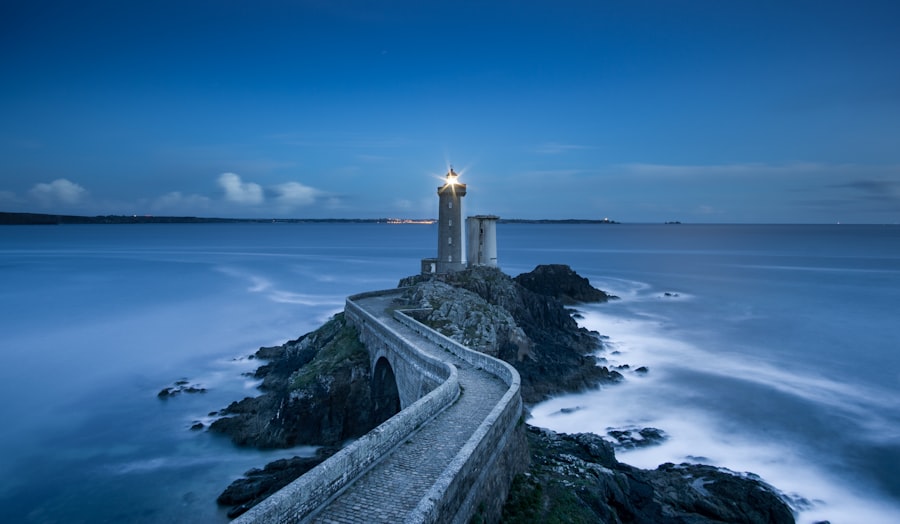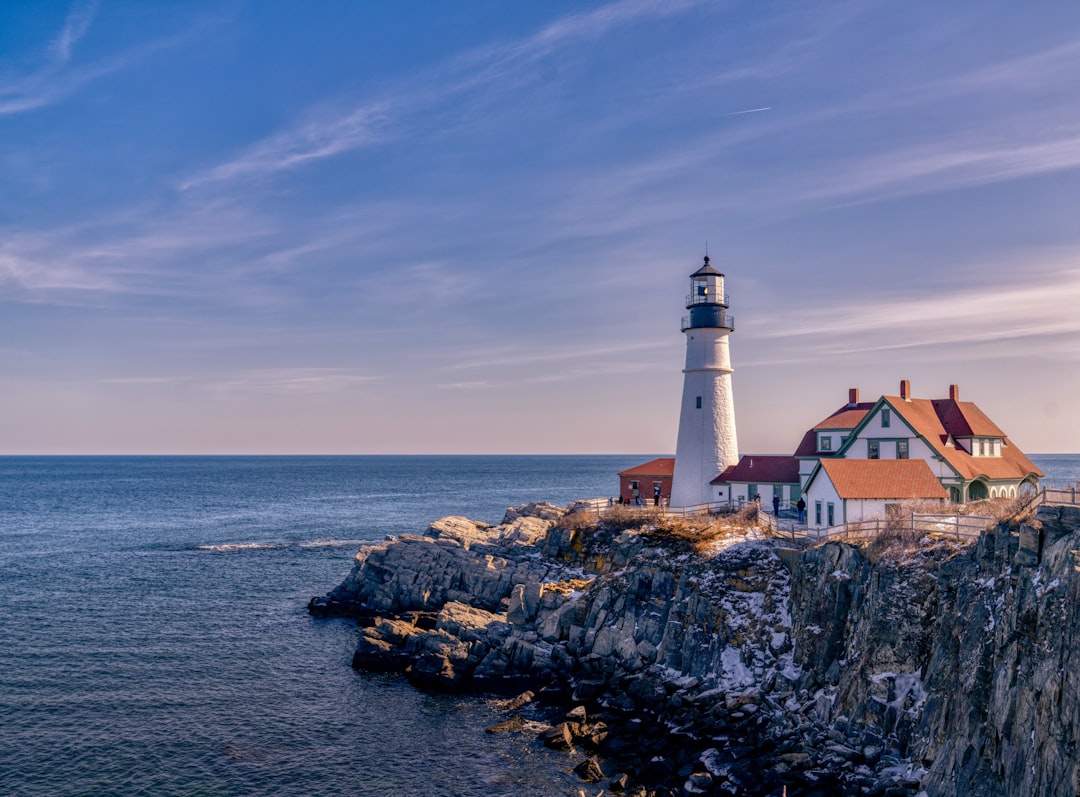The Drake Passage, a body of water that separates South America from Antarctica, is renowned for its tumultuous seas and unpredictable weather. At the heart of this challenging maritime region stands the Drake Passage Lighthouse, a beacon of hope and guidance for sailors navigating these treacherous waters. This lighthouse not only serves as a navigational aid but also symbolizes the resilience of human ingenuity in the face of nature’s formidable forces.
Its towering structure, often shrouded in mist and surrounded by the roar of crashing waves, has become an iconic landmark for those who traverse this perilous route. The significance of the Drake Passage Lighthouse extends beyond its physical presence. It represents a vital link in maritime navigation, ensuring that vessels can safely traverse one of the most dangerous passages in the world.
The lighthouse stands as a testament to the importance of maritime safety and the ongoing efforts to improve navigation in challenging environments. As ships continue to navigate these waters, the lighthouse remains a steadfast guardian, illuminating the path for adventurers and commercial vessels alike.
Key Takeaways
- The Drake Passage Lighthouse is a crucial navigational aid for ships traveling through the treacherous waters of the Drake Passage.
- The lighthouse has a rich history dating back to the early 20th century, serving as a beacon of hope for sailors and explorers.
- Navigating the Drake Passage is challenging due to its unpredictable weather, strong currents, and icebergs, making the lighthouse essential for safe passage.
- Technology plays a vital role in navigating the Drake Passage, with modern equipment and satellite systems aiding ships in their journey.
- When navigating the Drake Passage, it is important to seek local knowledge, plan for extreme conditions, and prioritize safety above all else.
History of the Drake Passage Lighthouse
The history of the Drake Passage Lighthouse is steeped in maritime lore and necessity. Established in the late 19th century, the lighthouse was built in response to numerous shipwrecks that plagued the waters of the Drake Passage. The treacherous conditions, characterized by strong currents and fierce storms, made it imperative to create a reliable navigational aid.
The construction of the lighthouse was no small feat; it required significant resources and expertise to erect a structure capable of withstanding the harsh elements. Over the years, the lighthouse has undergone various renovations and upgrades to enhance its functionality and resilience. Technological advancements have played a crucial role in its evolution, allowing for improved lighting systems and communication capabilities.
Despite these changes, the lighthouse has retained its historical charm, serving as a reminder of the maritime challenges faced by sailors throughout history. The stories of those who have relied on its light are woven into the fabric of its existence, making it not just a navigational tool but also a monument to human perseverance.
Importance of the Drake Passage Lighthouse for Navigation

The Drake Passage Lighthouse plays an indispensable role in maritime navigation, particularly for vessels traversing this notoriously difficult route. Its strategic location provides critical visual guidance for ships navigating through turbulent waters, where visibility can often be compromised by fog and storms. The lighthouse’s powerful beam cuts through darkness and inclement weather, offering sailors a reliable point of reference as they navigate their way through one of the world’s most challenging maritime corridors.
Moreover, the lighthouse serves as a crucial waypoint for vessels traveling between South America and Antarctica. It marks a significant transition point for ships entering or exiting the passage, helping to prevent collisions and groundings that could result in catastrophic consequences. The presence of the lighthouse not only enhances safety but also instills confidence in mariners who must contend with the unpredictable nature of the Drake Passage.
Its light is a reassuring sight for those who venture into these waters, reminding them that they are not alone in their journey.
Challenges of Navigating the Drake Passage
| Challenge | Description |
|---|---|
| Strong Winds | The passage is known for its strong westerly winds, often reaching gale force. |
| Rough Seas | The combination of strong winds and currents can create rough and unpredictable sea conditions. |
| Narrow Passage | The Drake Passage is a narrow stretch of water between South America’s Cape Horn and the South Shetland Islands of Antarctica. |
| Icebergs | During certain times of the year, icebergs can pose a hazard to navigation. |
Navigating the Drake Passage is fraught with challenges that test even the most experienced mariners. The passage is notorious for its rough seas, strong currents, and rapidly changing weather conditions. Sailors must contend with powerful winds that can whip up waves reaching heights of over 30 feet, creating an environment that can be both physically and mentally taxing.
These conditions demand not only skill but also an intimate understanding of the passage’s unique characteristics. In addition to the physical challenges posed by the environment, navigators must also be acutely aware of potential hazards such as icebergs and submerged rocks. The unpredictable nature of these dangers requires constant vigilance and adaptability.
Mariners often rely on detailed charts and real-time weather updates to make informed decisions about their routes. The combination of natural obstacles and ever-changing conditions makes navigating the Drake Passage a formidable task that requires both experience and respect for the sea.
Role of Technology in Navigating the Drake Passage
In recent years, advancements in technology have revolutionized navigation in the Drake Passage, enhancing safety and efficiency for vessels traversing these challenging waters. Modern ships are equipped with sophisticated navigation systems that utilize GPS technology, radar, and electronic chart displays to provide real-time information about their surroundings. These tools allow mariners to make informed decisions based on accurate data, significantly reducing the risks associated with navigating such treacherous waters.
Furthermore, satellite communication has transformed how sailors receive weather updates and navigational information. With access to real-time forecasts and alerts about changing conditions, crews can adjust their routes proactively to avoid dangerous situations. The integration of technology into maritime navigation has not only improved safety but has also increased confidence among sailors venturing into the Drake Passage.
As technology continues to evolve, it is likely that navigation in this region will become even more precise and reliable.
Tips for Navigating the Drake Passage

For those planning to navigate the Drake Passage, preparation is key to ensuring a safe journey. First and foremost, mariners should familiarize themselves with the unique characteristics of the passage, including its weather patterns and potential hazards. Understanding how to read nautical charts and interpret weather forecasts is essential for making informed decisions while at sea.
Additionally, having contingency plans in place can help crews respond effectively to unexpected challenges. Another important tip is to ensure that all equipment is in optimal working condition before setting sail. Regular maintenance checks on navigation systems, communication devices, and safety gear can prevent malfunctions during critical moments.
It is also advisable for crews to engage in thorough training exercises that simulate various scenarios they may encounter while navigating the passage. By honing their skills and preparing for potential challenges, sailors can increase their chances of a successful voyage through this formidable waterway.
Safety Measures for Navigating the Drake Passage
Safety should always be a top priority when navigating the Drake Passage. Mariners are encouraged to adhere to established safety protocols and guidelines designed to mitigate risks associated with this challenging environment. One essential measure is to maintain constant communication with other vessels in the area as well as with shore-based authorities.
This practice fosters collaboration among mariners and enhances situational awareness. Additionally, equipping vessels with appropriate safety gear is crucial for ensuring crew safety during emergencies. Life jackets, lifeboats, flares, and first aid kits should be readily accessible on board.
Crews should also conduct regular safety drills to familiarize themselves with emergency procedures and ensure everyone knows their roles in case of an incident. By prioritizing safety measures and fostering a culture of preparedness, mariners can navigate the Drake Passage with greater confidence.
Wildlife and Environmental Considerations in the Drake Passage
The Drake Passage is not only known for its challenging navigation but also for its rich biodiversity and unique ecosystems. The waters are home to various marine species, including whales, seals, and seabirds that thrive in this nutrient-rich environment. As vessels navigate through these waters, it is essential for crews to be mindful of their impact on local wildlife and ecosystems.
Mariners are encouraged to adopt responsible practices that minimize disturbances to marine life. This includes maintaining safe distances from wildlife sightings and adhering to guidelines established by environmental organizations. Additionally, crews should be aware of potential pollution risks associated with maritime activities and take steps to prevent spills or waste discharge into these pristine waters.
By prioritizing environmental considerations, sailors can contribute to preserving the delicate balance of life within the Drake Passage.
Navigation Services and Facilities at the Drake Passage Lighthouse
The Drake Passage Lighthouse offers various navigation services and facilities designed to support mariners traversing this challenging route. One of its primary functions is providing real-time information about weather conditions and navigational hazards through radio communication systems. This service is invaluable for vessels seeking guidance as they navigate through unpredictable weather patterns.
In addition to communication services, the lighthouse serves as a waypoint for vessels needing assistance or seeking refuge from adverse conditions. Its facilities may include basic amenities for crews who require rest or resupply during their journeys.
Famous Voyages and Expeditions through the Drake Passage
Throughout history, numerous famous voyages have traversed the Drake Passage, each contributing to our understanding of this remarkable region. Explorers such as Ferdinand Magellan were among the first Europeans to navigate these waters in search of new trade routes during the Age of Exploration. Their journeys paved the way for future expeditions that would further unveil the mysteries of Antarctica.
In more recent times, scientific expeditions have utilized this passage to study climate change and its effects on polar ecosystems. Researchers have embarked on voyages through these waters to collect data on ocean currents, marine life, and ice formations, contributing valuable insights into global environmental changes. These expeditions highlight not only the navigational challenges posed by the Drake Passage but also its significance as a site for exploration and discovery.
Future of the Drake Passage Lighthouse and Navigation in the Region
As maritime technology continues to advance, the future of the Drake Passage Lighthouse remains promising yet challenging. Ongoing efforts to enhance navigational safety will likely lead to further improvements in lighthouse technology and communication systems. The integration of artificial intelligence and machine learning may revolutionize how mariners receive real-time data about weather conditions and navigational hazards.
The lighthouse will play a crucial role in guiding vessels through these changing waters while promoting responsible practices that protect local ecosystems. In conclusion, the Drake Passage Lighthouse stands as a vital symbol of navigation safety amidst one of the world’s most challenging maritime environments.
Its historical significance, combined with modern technological advancements, ensures that it will continue to serve as a beacon for sailors navigating these treacherous waters for years to come. As explorers venture into this remarkable region, they carry with them not only a sense of adventure but also a commitment to preserving its natural beauty for future generations.
The Drake Passage Lighthouse, a beacon of guidance in one of the world’s most treacherous maritime routes, stands as a testament to human ingenuity and resilience. For those interested in exploring more about the geographical significance and the adventurous spirit surrounding such landmarks, an article on MyGeoQuest provides an insightful perspective. You can read more about similar geographical wonders and their historical contexts by visiting this related article on MyGeoQuest.
WATCH NOW! Drake Passage: Earth’s Deadliest Waters Revealed
FAQs
What is the Drake Passage Lighthouse?
The Drake Passage Lighthouse is a navigational aid located in the treacherous waters of the Drake Passage, which is the body of water between the southern tip of South America and the northern tip of the Antarctic Peninsula.
Why is the Drake Passage Lighthouse important?
The Drake Passage is known for its notoriously rough seas and unpredictable weather, making it a challenging area for maritime navigation. The lighthouse serves as a crucial guide for ships and vessels passing through this dangerous stretch of water.
When was the Drake Passage Lighthouse built?
The exact date of construction for the Drake Passage Lighthouse is not readily available, but it is known to have been in operation for many years, aiding ships in safely navigating the treacherous waters of the Drake Passage.
Who maintains the Drake Passage Lighthouse?
The Drake Passage Lighthouse is likely maintained by the respective maritime authorities of the countries that have jurisdiction over the waters of the Drake Passage, such as Chile and Argentina.
Is the Drake Passage Lighthouse open to visitors?
Due to its remote location and the challenging conditions of the Drake Passage, the lighthouse is not typically open to visitors and is primarily a functional aid for maritime navigation.
